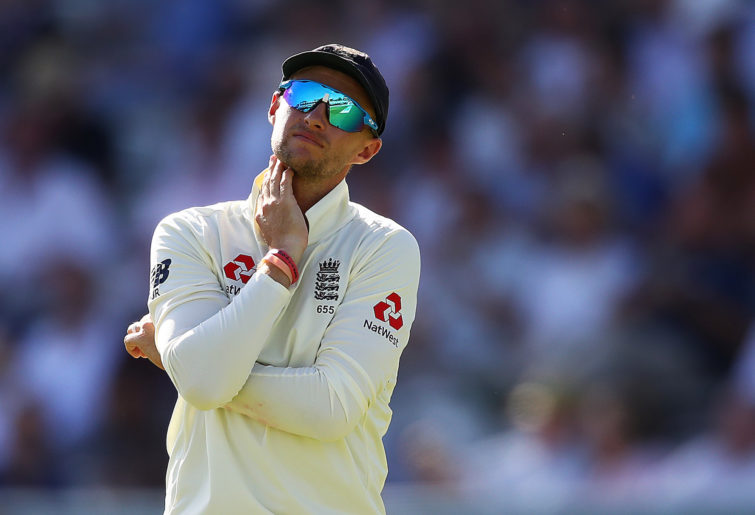Mother nature has intervened in the opening Test match of the second running of the World Test Championship.
With the fifth day completely washed out, the first Test between England and India was declared a draw and both sides sharing four WTC points.
Despite Michael Vaughan’s tongue-in-cheek comment on his Twitter account, the rain almost certainly saved England from defeat. India were left chasing 157 with nine wickets in hand.
On the face of it a draw doesn’t seem like a bad result but the manner in which England played in the game highlighted an underlying issue with the English side: the strength of their batting line-up.
The deficiencies of the batting unit have been discussed in most corners of the cricketing world. Everyone from New Zealand’s Simon Doull to ex-teammates Michael Vaughan and Kevin Pietersen have commented on the English side.
One eyebrow-raising part of the whole situation is the strength and depth of England’s white-ball sides. On one side the English white-ball sides have risen to dominance and have a lot of talent in the wings, on the other hand the English Test side has less class than an Australian bush doof at two in the morning.
Has England’s quest for white-ball dominance gutted the Test side for the foreseeable future?

(Julian Finney/Getty Images)
Postulating on how the series might play out, so far the first Test has played out exactly to script. England’s batting line-up with the exception of Joe Root has floundered.
Only some classy batting from Root, a vintage performance from James Anderson and Ollie Robinson announcing himself on the world stage kept England within sight of a positive result.
If the rest of the Test matches play out in a similar fashion Root will need to have a series not seen since Don Bradman graced the English shores to keep his side in the game against a very talented Indian bowling line-up.
Since 2019 England’s batsman from one to seven have only averaged 32.35. Only Zimbabwe, the West Indies and the rebuilding South African side has averaged lower.
By comparison Australia leads the way with 42.69, India average 40.84 even Sri Lanka – who have struggled mightily since the retirements of Mahela Jayawardene and Kumar Sangakkara – are higher with 35.40.
Joe Root is the only batsman in the current line-up that averages more than 35. Both openers Rory Burns and Dom Sibley have played over 20 matches and can only score their runs at a tick over 30.
Zak Crawley looks promising but since his groundbreaking double hundred it looks like the only way he could afford to buy a run would be to marry into the royal family.
What all this means is that far too often Joe Root is forced to come into the side two wickets down for not a lot and begin a rebuilding mission. All of this has taken its toll on England’s batting performances. Of their last 12 innings only two have been over 300, both of them 303 all out.
Of the remaining ten, only two are above 200 and of the remaining eight, five of them are under 150. This is absolutely woeful from a team with the resources available to them and when you factor in the strength of their ODI and T20 sides it becomes even more perplexing watching the Test side struggle to find any consistency.
The English ODI side – following their embarrassing elimination at the pool stages of the 2015 ODI World Cup – revamped its set-up from top to bottom, with a great deal of success.
Many people still raise eyebrows at the dubious nature of their 2019 World Cup victory but there can be no doubt that in the years leading up to the tournament England were the pace setters in the ODI format.
Since the 2015 World Cup England embraced a hyper-aggressive approach to the game, utilising Joe Root to anchor the innings.
Powered by their captain Eoin Morgan and impressive stroke play from white-ball specialists like Jason Roy, Jos Buttler and Jonny Bairstow, England have powered themselves to some impressive scores, passing 400 four times and a 399 since the World Cup, which included 6-481 against Australia in 2018.

(Photo by MB Media/Getty Images)
An even more impressive flexing of England’s ODI strength and prowess came earlier this year when they took on Pakistan in a series.
Two days before the series was about to begin the England side was decimated by a positive COVID-19 Test and the entire squad was replaced.
Ben Stokes was the only regular member of the starting XI and was named captain. England handed out caps to five debutants in the first game of the series and proceeded to clean sweep Pakistan.
Outside of Ben Stokes the only player who had played more than ten ODIs for England was James Vince. Yet despite the lack of experience, players seemed equipped to come into the side straight away and execute at an international standard.
Almost all of England’s white-ball stars have been given berths in the Test side. Players like Jason Roy and Alex Hales along with Buttler and Bairstow have attempted to make a name for themselves in the long format without much success.
Bairstow and Buttler have been given prolonged runs in the Test side due to playing the role of wicketkeeper but with career averages in the low 30s they have hardly proven themselves indispensable.
The current Test openers Dom Sibley and Rory Burns appear to have a long list of cons against their name. England officials seem to be confusing defensive with simply dour, and diligence with a lack of shots.
Both openers can inconsistently occupy the crease, but their techniques mean they have easily controllable scoring zones, meaning even if they get through the new ball they aren’t putting pressure back on the bowlers.
Sibley faced 203 balls for 36 runs over his two innings, which simply isn’t good enough considering the fragility of the England line-up, at some point a counter attack has to occur before Joe Root makes his way to the crease.
I know people will be quick to point out the Rohit Sharma only managed 36 runs off 107 balls, which isn’t much faster. There are some mitigating circumstances. Firstly, Rohit was batting at the end of Day 1 and then the tricky first hour of Day 2 so it is responsible to work into your innings. Secondly, we all know Rohit has an arsenal of shots at his disposal. He is strong through the offside and quick on the hook and pull, which ended up being his undoing.
Bowlers have to be mindful of their lines and lengths to Rohit otherwise they will go the journey.
Sibley, on the other hand, seems to have no real shots to offer unless bowlers drift onto his pads, allowing bowlers to simply dry up any scoring shots by simply hanging the ball outside off stump. Sibley isn’t VVS Laxman off his pads by any stretch either. India set a short midwicket and got him out bowling to his strength in the first innings.

(Photo by Nathan Stirk/Getty Images)
The fact that these two players with such obvious deficiencies have been given the extended run in the side screams one of two things. Either the ECB can’t see the writing on the wall and are doggedly persisting with the combination until they make it work, or they simply do not have any openers in the county system they feel can do a better job.
How has England got it so lopsided that their white-ball system can produce a team of world beaters with depth not seen since the Australian sides of the early 2000s but the oldest first-class system in the world is producing such fragile, feeble excuses for Test batsmen?
The rot couldn’t have been made any more apparent when England were happy for Test players to miss games for franchise cricket and lean heavily into resting players during a series despite criticism from past players about eroding the integrity of the side.
England were sending the message that corners could be cut and priorities lay elsewhere and their side has started to feel the effects of the all-consuming desire to dominate the ODI game.
One thing is for certain: England need to balance out their priorities and find Joe Root some help or they will waste arguably their most talented batsman since the Second World War carrying an understrength batting unit to something scarcely better than mediocrity and hoping that his bowlers pick up the slack.
The quest for white-ball dominance has yielded results and England have firmly entrenched themselves as a powerhouse, now for the good of the game they need to start producing legitimate Test prospects.
For now they have a marquee series against India to take care off and in the short term it appears Anderson and company will have to pick up the slack with the ball and Joe Root will need to do the heavy lifting with the willow.































































































